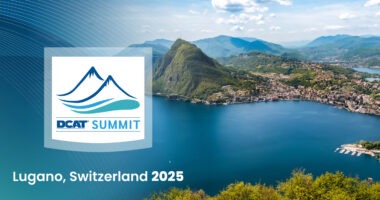Eli Lilly Shares Technology Transfer Strategy for TB Drugs
The Lilly MDR-TB Partnership, a public-private partnership set up by Eli Lilly to address the problem of multidrug-resistant tuberculosis (MDR-TB), is a successful example of a global health initiative involving technology transfer and manufacturing expertise.
Eli Lilly and Company is providing details of its long-standing technology transfer program to increase the global supply of medicines for multidrug-resistant tuberculosis (MDR-TB). Begun in 2003, the effort included Lilly donating manufacturing technology and know-how for two antibiotics to pharmaceutical manufacturers in China, India, Russia, and South Africa, all MDR-TB hot spots. It also served as the foundation for the Lilly MDR-TB Partnership, the company’s largest-ever philanthropic effort. So what can be learned from this supply strategy? DCAT Value Chain Insights examines the details.
Examining the need
In 2003, Lilly decided to provide the intellectual property rights and manufacturing know-how for two Lilly antibiotics, capreomycin and cycloserine, which had been identified as effective in the treatment of MDR-TB. This decision led Lilly to establish the Lilly MDR-TB Partnership to improve treatment options for those living with MDR-TB as a philanthropic initiative. The Lilly MDR-TB Partnership was designed with leading public health organizations, including government leaders, global health organizations, country-level healthcare providers, and community and advocacy organizations. From 2003 through 2016, Lilly has committed $170 million in cash, medicine, and training to the partnership—the largest philanthropic undertaking in the company’s history. As part of this initiative, Lilly partnered with global organizations to train doctors, nurses, and community healthcare workers in target countries to recognize, treat, monitor, and prevent the spread of MDR-TB; funded research for the development of new medicines to treat TB and MDR-TB; and worked with manufacturers in high-burden countries to manufacture and increase access to quality-assured capreomycin and cycloserine. Training other manufacturers to produce capreomycin and cycloserine involved technology transfer for the manufacturing processes of the active pharmaceutical ingredients (APIs) and drug products of the two antibiotics. In this process, Lilly worked with the recipient companies to transmit the knowledge and systems needed to produce these drugs.
Evaluating manufacturing positions
The genesis to establish new supply lines to manufacturers in high-burden countries was based on a decision by Lilly to cease commercial production for capreomycin and cycloserine based on small market demand and rising generic competition while seeking to maintain a sustainable, long-term supply to developing countries that needed the drugs. The supply strategy was to move manufacturing closer to where people needed the medicines most, increase manufacturing capacity and volume globally, lower manufacturing costs to enable low-cost medicines for patients and payers, and establish a sustainable, long-term, high-quality supply of capreomycin and cycloserine. The company identified capable manufacturers in several high-burden countries—China, India, Russia, and South Africa—and offered to transfer the technology for the production of capreomycin and cycloserine. For the receiving manufacturers, the transfer was free of charge and included access to know-how and technical support as well as funding for facility upgrades so they could manufacture the medicines on their own. In addition, Lilly identified and worked with companies in the United States and Greece to provide additional capacity and increase supply of these products to global markets.
In selecting its partners, Lilly had four main requirements: an interest by the partner to accept the transfer of the technology for the two drugs; sufficient baseline technical capabilities and manufacturing facilities; sufficient quality systems and business processes; and a willingness to support the goals of the STOP-TB partnership, an international coalition of partners aimed at combating TB and which is housed through the World Health Organization (WHO). In evaluating the partners, Lilly analyzed the receiving sites, which included an assessment of facilities, staff, availability of raw materials, manufacturing practices, and quality control and assurance processes. The company also looked at broader factors, including the company’s culture and financial sustainability.
Lilly selected four manufacturers in high-burden countries: Zhejiang Hisun Pharmaceutical in China; Shasun Pharmaceuticals in India; JSC Biocom in Russia; and Aspen Pharmacare Holdings in South Africa. It also identified three additional partners outside these areas: Vianex in Greece; the Chao Center for Industrial Pharmacy in the US; and Akorn Pharmaceuticals in the US. These partners were selected to provide manufacturing of the API and/or drug product with the appropriate technology transfer. The products transferred were: Hisun (capreomycin API and drug product); Shasun (cycloserine API); JSC (cycloserine drug product); Aspen (cycloserine and capreomycin drug products); Vianex (capreomycin drug product); the Chao Center for Industrial Pharmacy (cycloserine drug product); and Akorn Pharmaceuticals (capreomycin drug product).
Lilly also assessed the capital requirements of the receiving facilities to see if additional support would be needed. The company supported the construction of a downstream purification facility for Hisun to support the API manufacturing of capreomycin. It also provided information on the design, construction, and start-up of a sterile drug-product manufacturing unit as well as technical information relating to capreomycin production. Lilly’s engineering, technical, and quality staff reviewed designs for Hisun’s new facility, and Lilly provided financial contributions contingent on Hisun completing specific milestones. Lilly also provided technical and financial support for a sterile production unit in Port Elizabeth, South Africa to Aspen, which had previous plans to build that unit.
Implementing the technology transfer
In implementing the technology transfer, Lilly worked with its partners to help them complete experimental process runs and produce the needed documentation. The technology transfer involved specific technical and scientific knowledge with each product. Areas covered included: establishment and maintenance of master and working cell cultures; sterility control and assurance programs; vendor certification; data management (trends, analysis, and interpretation); statistical control procedures; data management in decision-making; change control for quality management; design of experiments to assess raw materials and process changes; investigation of out-of-specification results; equipment selection and acceptance testing; operator certification procedures; and manufacturing controls and validation.
Lilly also worked with Purdue University’s College of Pharmacy in Indiana, which provided training in good manufacturing practices (GMP) to the receiving companies, and Lilly provided additional training and assistance. As an example of the collaboration that resulted, it was determined that imported raw materials for capreomycin added to the cost of the final API, so a joint project team between Lilly and Hisun evaluated the suitability of locally sourced ingredients, first on a laboratory scale and then on a pilot-plant scale, which showed that the local ingredients could be used on a larger scale. The pilot-plant project further resulted in a process that improved yield and reproducibility.
In transferring technology to Shasun, Lilly and Shasun addressed a problem in achieving consistent analytical results for the cycloserine API. The problem was identified as being with local production reaction tanks and a dryer that had slightly different properties from Lilly’s equipment in Indiana and the need to make appropriate changes to ensure product consistency. Another issue arose with the quality of the final product. It was determined that a locally sourced raw material proved to be problematic, so it was decided that this raw material would be imported using the same supplier that Lilly had used in its manufacturing processes. Both problems were resolved satisfactorily to enable high-quality material to be produced.
Lessons learned
The lessons learned from the technology transfer for the drugs were not only important for the success of the MDR-TB project, but also provide insight into how to develop and execute successful technology transfer, particularly in addressing unique challenges that might arise when manufacturing and serving developing countries. Fundamentally, as Lilly pointed out in a white paper on the MDR-TB project, technology transfer of quality-assured drugs is complex and resource-intensive. In developing countries, in particular, manufacturers may need training in specific product skills and/or manufacturing elements. The successful technology transfer involves on-site and in-country assistance. The duration of the technology transfer can vary from several months to several years, depending on the needs of the transfer recipient. In choosing partners, Lilly pointed out in its white paper, that it is important to select partners that are committed to the transfer despite the challenges that may arise as well as to have partners that have the resources and communication structure amenable to execute the transfer and the manufacturing project. Lilly also pointed out that the transfer recipients must also have a “go-to-market” strategy and understand fully the market value of what they will produce and the related return on investment as well as understand how the technology or capabilities gained may be applied to other product lines in order to make a project financially viable. Lastly, Lilly points out the need for high staff involvement, which may involve further skill-building in specific quality issues, on the part of the receiving company to ensure the successful transfer of a manufacturing process.
Lilly also offered insight into considerations for local manufacturing in developing countries by addressing some of the supply-chain issues that might be encountered. The company pointed out that even though a technology transfer may be for a product with a relatively large patient population, the available market may be much smaller depending on whether local healthcare systems are capable of diagnosing/finding eligible patients and dispensing treatments and whether other treatments are available. As a case in point, in 2013, WHO estimated that 450,000 MDR-TB patients a year should be receiving treatment, but that the WHO Global Drug Facility (GDF) supplied medicines only to 33,000 patients. (The Stop TB Partnership GDF, established in 2001, is a one-stop procurement mechanism for ensuring quality-assured TB drugs and diagnostics). This gap is due in part to undiagnosed patients not receiving proper treatment and also in the fragmentation of the market itself, which in a developing countries, typically consists of donors, governments, and the private sector with no single dominant purchaser. This fragmentation is further complicated by country and donor funding that can contribute to process complexity and increased cycle times as organizations seek to align local, regional, national, and international priorities with funding requests, which in turn can cause delays in disbursement of funding for drugs. These processes add further uncertainty for a manufacturer in evaluating and forecasting market demand.
Quality compliance is also an issue. In supplying product, manufacturers must meet internationally sanctioned GMP standards, or International Quality Assurance (IQA). Many companies meet IQA guidelines by securing approval from a regulatory agency that is a member of the International Conference on Harmonization. In the case of MDR-TB, a supplier to the WHO GDF must be approved through a regulatory authority of the ICH (i.e., the US Food and Drug Administration, European Medicines Agency, or the Japanese Ministry of Health, Labor, and Welfare) or through the WHO prequalification process. If a local manufacturer is not subject to regulatory oversight from one of these bodies, a project may involve upgrading manufacturing and laboratory equipment, work processes, quality assurance and control standards, policies, and staffing. In the case of the Lilly MDR-TB partnership, Lilly supported its manufacturing partners in achieving IQA standards.
Additional considerations in supplying local markets in developing countries are the additional costs and time required to meet the procurement, packaging, and regulatory requirements of each country in which a product is registered and supplied. For example, to be eligible for procurement by the WHO GDF, manufacturers of MDR-TB drugs may also be required to register their products in countries to which the GDF supplies. Therefore, manufacturers wanting to supply these countries through the GDF mechanism must obtain multiple registrations: one for IQA eligibility purposes and another in each country they will be supplying. In the case of MDR-TB drugs, more than 17 of the 29 countries considered to have the highest MDR-TB incidence expect some form of local registration. Some countries, however, offer accelerated or abbreviated processes if IQA approval has already been obtained, or the WHO GDF may obtain specific waivers, on a case-by-case basis.
Lastly, in supplying local developing markets, the Lilly white paper points out additional challenges in ensuring a complete supply chain for a given product. Global agencies, such as the GDF, are responsible for managing purchasing of medicines from suppliers, consolidating multiple medicines into a given country, and delivering them to the first port of entry in that country. Each country is then responsible for the rest of the supply chain in its country. A lack of integration and information can make this problematic. Moreover, in-country supply management, which involves the monitoring, forecasting, ordering, storage, and delivery of the medicines, can be variable. Reducing supply-chain uncertainty is an important consideration in achieving a desired goal of serving local populations and markets.





